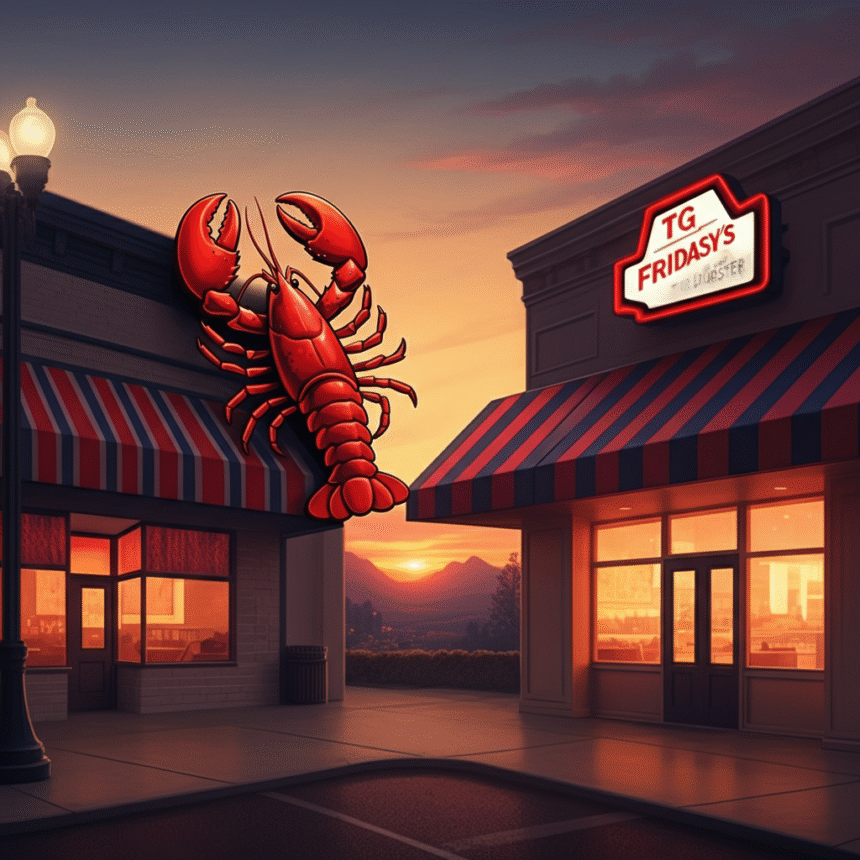For decades, Red Lobster and TGI Fridays have been iconic names in the casual dining industry. Known for their signature dishes like cheddar bay biscuits and loaded potato skins, these restaurants have been staple destinations for everything from family dinners to casual weekend lunches. However, recent years have brought waves of closures within both franchises, leaving diners and communities wondering what went wrong.
This blog explores the rise and challenges of these renowned brands, the factors contributing to their struggles, and what it signals about the evolving future of the casual dining sector.
A Legacy of Dining Excellence
The Rise of Red Lobster
Red Lobster was founded in 1968 in Lakeland, Florida, with the mission of making quality seafood accessible to everyday Americans. Over time, it became synonymous with ultimate comfort food options like shrimp scampi and lobster tails. By the 1990s, Red Lobster had expanded globally, cementing its status as a go-to seafood restaurant chain.
Yet, despite its popularity, cracks have started to appear in its success. Recent challenges have led to some locations closing, causing loyal patrons to lament the loss of a beloved eatery.
The Story of TGI Fridays
TGI Fridays began in Manhattan in 1965 as a vibrant bar designed to attract singles, introducing the concept of casual dining that combined fun and convenience. Famous for its Jack Daniel’s BBQ offerings and festive vibe, it quickly grew into a cultural icon, serving up good food alongside a guaranteed good time.
However, the competitive dining scene and shifts in consumer expectations have placed strain on TGI Fridays in recent years. Like Red Lobster, the closures have raised questions about whether the brand has lost touch with its audience.
Why Are Red Lobster and TGI Fridays Closing?
Changing Consumer Preferences
One of the major contributors to these closures is the shift in consumer dining habits. Today’s diners are more focused on experiences, healthier options, and fast-casual formats. Millennials and Gen Z consumers, who make up a significant portion of the market, are opting for smaller, innovative chains or niche dining experiences over the kitschy appeal of traditional casual dining.
Additionally, consumers are increasingly value-conscious. While dishes like Red Lobster’s mixed seafood platters or TGI Fridays’ ribs provide indulgence, they’re often seen as pricey, especially when compared to more affordable fast-casual or fast-food alternatives.
Economic Challenges and Rising Costs
The closure of locations isn’t just about consumer preferences; economic factors have also played a key role. Rising food costs, wage pressures, and inflation have put added financial strain on operating multiple large-format restaurants. Compared to fast-casual chains with simpler menus and smaller costs, brands like TGI Fridays and Red Lobster are struggling to maintain profitability.
On top of that, the COVID-19 pandemic severely impacted the restaurant industry. Even as businesses return to pre-pandemic activity levels, large dining chains have struggled to recapture foot traffic and manage delivery options profitably.
Branding and Operational Issues
Both chains have faced hurdles with their branding, struggling to modernize their image and appeal to younger generations. The festive, over-the-top feel that once defined TGI Fridays is less appealing in an era where minimalist, trendy design dominates. Similarly, Red Lobster has faced criticism for sticking rigidly to tradition without adapting its menu offerings or dining experience to meet new expectations.
Additionally, operational inefficiencies have resulted in inconsistent dining experiences across locations, further driving away diners looking for a polished experience.
The Impact of Closures
Effects on Employees
With each closure, employees ranging from waitstaff to kitchen staff are left without jobs. Many of these positions provide a source of livelihood for hourly workers, making closures particularly devastating to local employment rates.
Community and Economic Impacts
The closures also leave a void in many communities, particularly in suburban and rural areas where these restaurants often serve as mainstays for family outings or social gatherings. Beyond that, suppliers and related industries may feel the ripple effects as demand for their services drops.
Consumer Sentiment
For many long-time customers, the closures represent more than just the loss of a dining option; they mark the end of a shared cultural experience. Some loyal patrons feel a sense of nostalgia tied to these brands, and their decline points to broader changes in the overall restaurant experience.
What the Future Holds for Casual Dining
The struggles of Red Lobster and TGI Fridays highlight broader trends in casual dining, prompting important questions about the future. While this segment of the restaurant industry isn’t disappearing, it’s certainly evolving to adapt to modern demands.
Here are a few key trends shaping the future:
- Focus on Personalization
Successful casual dining brands are investing in digital tools that allow diners to personalize meals, track orders, and even enjoy loyalty rewards tailored to their habits.
- Health and Sustainability
Restaurants that offer healthier menu options and commit to sustainable practices are winning over consumers. Expect more brands to follow suit with locally sourced ingredients and plant-based choices.
- Hybrid Models
Many sit-down restaurants are exploring hybrid approaches, blending casual dine-in with fast-casual convenience, such as offering streamlined delivery options and smaller menu selections.
- Experience-Driven Dining
The rise of themed or interactive dining experiences is drawing attention away from generic chains. Brands will need to focus on creating memorable in-person experiences.
What It Means for Diners and the Industry
The closures of Red Lobster and TGI Fridays undoubtedly reflect the shifting preferences and challenges in the dining industry. At the same time, their struggles also pave the way for innovation and new approaches. Whether through rebranding efforts or emerging competitors, the restaurant landscape is evolving to meet the demands of modern consumers.
For diners, this means more diverse options and exciting opportunities to experience the next wave of dining trends. For industry professionals, it emphasizes the importance of staying flexible, responsive, and forward-thinking in an era of fast-changing tastes.


